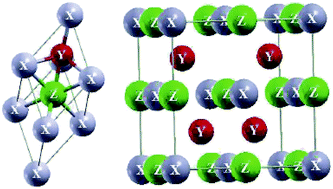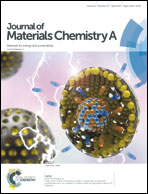Bismuth based half-Heusler alloys with giant thermoelectric figures of merit†
Abstract
Half-Heusler thermoelectric materials have attracted extensive research interest over the last two decades owing to their thermal stability, mechanical strength, and moderate efficiency. This article presents an ab initio theoretical evaluation of the electrical and thermal transport properties of three bismuth-based most promising thermoelectric alloys, selected out of 54 stable half-Heusler compounds. These are brand new compounds which are recently proposed to be stable (Nature Chem.7, 308 (2015)) and may have interesting properties. The calculated band structures of the three compounds, namely HfRhBi, ZrIrBi and ZrRhBi, served as a hint for their promising thermoelectric properties. HfRhBi and ZrIrBi turn out to be narrow band gap semiconductors while ZrRhBi is a moderate band gap semiconductor. A detailed study of the carrier concentration and temperature dependence of the Seebeck coefficient, power factor, lattice and electronic thermal conductivity and hence the figure of merit (ZT) is carried out. In contrast to most promising known thermoelectric materials, we found a high power factor for these materials (highest ∼17.36 mW m−1 K−2 for p-type ZrIrBi). All three systems (especially p-type) show high ZT values, as high as 0.45 for the ideal crystals. The maximum ZT and the corresponding optimal n- and p-type doping concentrations are calculated, which shall certainly provide guidance for future experimental work.


 Please wait while we load your content...
Please wait while we load your content...